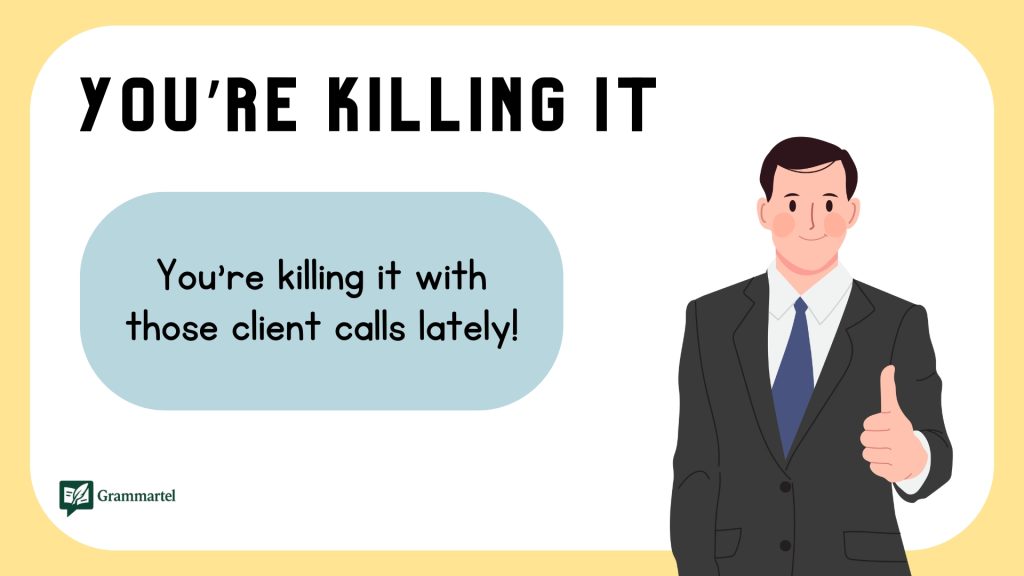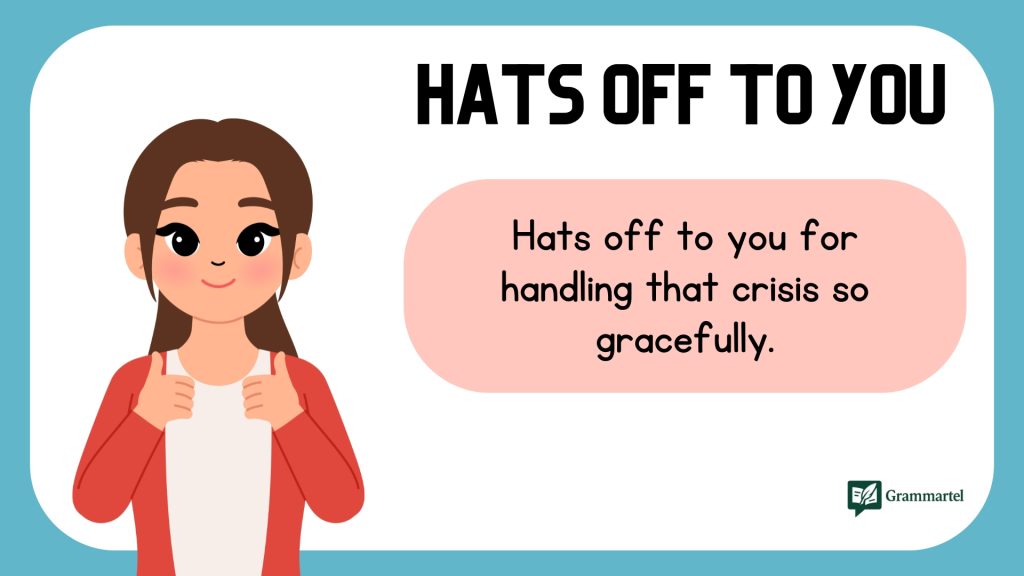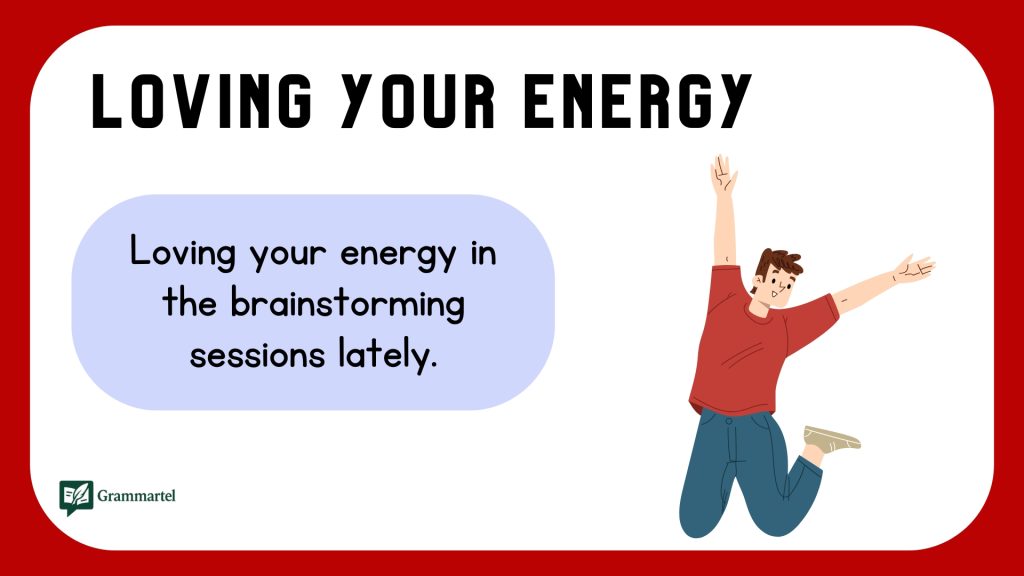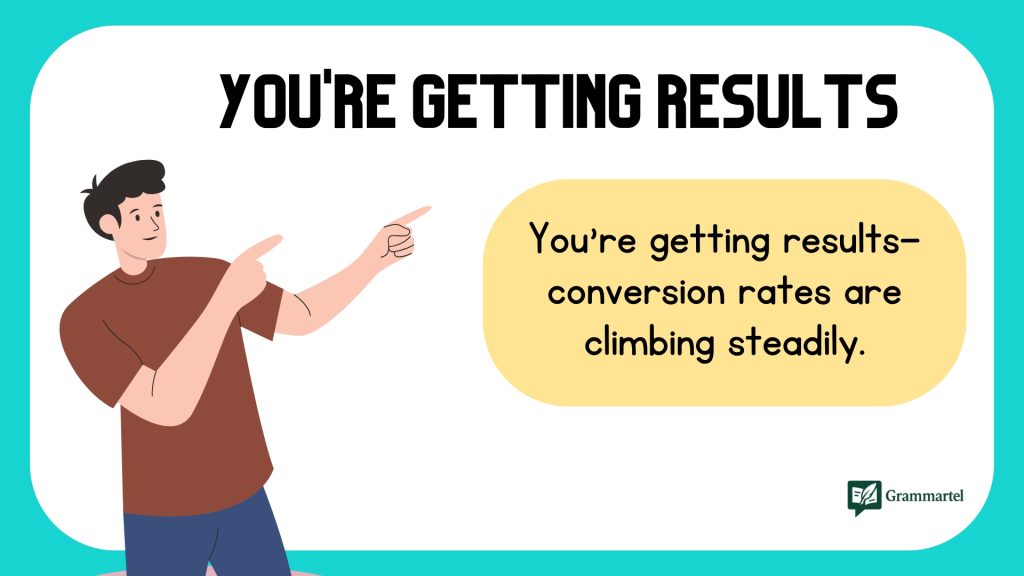Saying “Keep up the good work” is a classic way to show someone they’re doing a great job—but let’s be honest, it can start to sound a little worn out after a while. Whether you’re a teacher, manager, teammate, or just a friend, finding fresh and meaningful ways to give praise matters. Words can lift spirits, boost confidence, and keep motivation alive. In this guide, we’ll share 40 simple, friendly alternatives that get the message across without sounding like a broken record. Plus, we’ll show you how to use each one with easy examples that fit everyday situations.
What Does “Keep Up the Good Work” Mean?
“Keep up the good work” means you are doing well, and someone wants you to continue. It’s a way to say “good job” and encourage you to keep going. People often say it at work, in school, or during a project. It shows support and trust in your effort.
When to Use “Keep Up the Good Work“
Use this phrase when someone is doing something well and you want them to keep it up. Here are some examples:
- A manager to an employee after a job well done
- A teacher to a student who is improving
- A coach to a player who is practicing hard
- A friend to another who is reaching their goals
It’s a friendly and positive way to motivate others. Just make sure it fits the moment and sounds sincere.
40 Other Ways to Say “Keep Up the Good Work”
1. You’re killing it

Meaning: You’re performing exceptionally well.
Explanation: A trendy, informal way to praise high performance.
Example: You’re killing it with those client calls lately!
Best Use: In informal settings or among peers.
Worst Use: In formal corporate reviews or conservative cultures.
Tone: Very casual, energetic.
2. Outstanding performance
Meaning: You’ve exceeded expectations.
Explanation: Highlights exceptional delivery or execution.
Example: Outstanding performance in the last quarter—keep it up.
Best Use: Performance reviews or executive recognition.
Worst Use: Casual chats or peer feedback.
Tone: Formal, praising.
3. Good going
Meaning: Things are progressing well.
Explanation: Simple way to encourage continued effort.
Example: Good going on getting that bug fixed.
Best Use: In progress check-ins or quick feedback.
Worst Use: For formal achievements.
Tone: Casual, supportive.
See also : 40 Other Ways to Say “Firstly, Secondly, Thirdly” (With Examples).
4. You’re crushing it
Meaning: You’re excelling beyond expectations.
Explanation: Trendy slang to express strong success.
Example: You’re crushing it on the product launch!
Best Use: Startups, casual teams.
Worst Use: Serious or traditional workplaces.
Tone: Slang, enthusiastic.
5. That’s how it’s done
Meaning: This is the correct or ideal approach.
Explanation: Acknowledges best practices in action.
Example: That’s how it’s done—excellent leadership today.
Best Use: After successful execution.
Worst Use: If the method wasn’t actually optimal.
Tone: Affirming, casual.
6. You’re setting the bar high
Meaning: You’ve set an impressive standard.
Explanation: Praises someone for raising expectations through performance.
Example: You’re setting the bar high for the next presentation.
Best Use: Among top performers or high achievers.
Worst Use: If others may feel discouraged or competitive.
Tone: Motivational, appreciative.
7. Well played
Meaning: You made a smart move.
Explanation: Often used to acknowledge a clever decision or tactic.
Example: Well played—negotiating that deal took skill.
Best Use: Strategic wins or clever solutions.
Worst Use: Routine or non-tactical work.
Tone: Clever, informal.
8. Great hustle
Meaning: You’ve shown strong effort.
Explanation: Acknowledges energy and initiative.
Example: Great hustle closing those leads!
Best Use: Sales, sports, or fast-paced work.
Worst Use: Creative or strategic environments.
Tone: Energetic, sporty.
9. You nailed it
Meaning: You got it exactly right.
Explanation: Says the person executed something perfectly.
Example: You nailed that pitch—very persuasive!
Best Use: When the delivery is flawless.
Worst Use: If there were errors or issues.
Tone: Casual, confident.
10. Bravo
Meaning: Well done!
Explanation: Borrowed from performing arts, shows enthusiastic approval.
Example: Bravo on handling that client objection!
Best Use: Celebratory or performance-based praise.
Worst Use: Daily or routine achievements.
Tone: Exuberant, slightly formal.
11. Keep rocking
Meaning: Continue performing exceptionally.
Explanation: A fun, energetic way to motivate someone to sustain high performance.
Example: Keep rocking those design sprints—you’re doing awesome.
Best Use: Creative or casual teams.
Worst Use: Highly formal or conservative environments.
Tone: Upbeat, informal.
12. That’s what I like to see
Meaning: This is the standard or result I expect.
Explanation: Shows approval of effort or progress.
Example: You solved that problem quickly—that’s what I like to see.
Best Use: In-the-moment feedback or motivation.
Worst Use: If someone is already feeling unsure or insecure.
Tone: Positive, affirming.
13. Keep shining
Meaning: Continue standing out positively.
Explanation: Encourages someone who’s excelling to maintain their momentum.
Example: Your creativity is inspiring—keep shining.
Best Use: When someone is doing well in a visible way.
Worst Use: For behind-the-scenes roles where impact is less visible.
Tone: Uplifting, supportive.
14. You’re on fire
Meaning: You’re doing exceptionally well consistently.
Explanation: A modern way to say someone is in a “hot streak.”
Example: Three perfect client calls in a row—you’re on fire!
Best Use: During a run of consistent wins.
Worst Use: If success isn’t evident.
Tone: Energetic, enthusiastic.
15. Hats off to you

Meaning: I salute your work or effort.
Explanation: A respectful way to show deep appreciation.
Example: Hats off to you for handling that crisis so gracefully.
Best Use: When someone shows professionalism under pressure.
Worst Use: For casual or light situations.
Tone: Respectful, formal.
16. You’re making great progress
Meaning: You’re steadily advancing.
Explanation: Encourages someone who’s growing or improving.
Example: You’re making great progress on that training course.
Best Use: During skill-building or long-term tasks.
Worst Use: When someone feels stuck or hasn’t moved forward.
Tone: Encouraging, neutral.
17. You’ve got this
Meaning: I believe in your ability to succeed.
Explanation: Boosts confidence and reinforces capability.
Example: You’ve prepared well for the demo—you’ve got this!
Best Use: Just before a big presentation or challenge.
Worst Use: If confidence is clearly misplaced.
Tone: Supportive, motivating.
18. That’s the way
Meaning: You’re doing it right.
Explanation: Reinforces good behavior or choices.
Example: You addressed that issue tactfully—that’s the way.
Best Use: When affirming a specific behavior or strategy.
Worst Use: For unclear or ambiguous outcomes.
Tone: Friendly, guiding.
19. Keep striving
Meaning: Continue pushing toward your goals.
Explanation: Encourages persistence and continued effort.
Example: You’ve come far—keep striving for that certification.
Best Use: For long-term or difficult objectives.
Worst Use: When someone needs rest or is overexerted.
Tone: Motivational, persistent.
20. You’re going strong
Meaning: You’re maintaining solid progress.
Explanation: Highlights steady and consistent performance.
Example: You’re going strong with those weekly updates—great job.
Best Use: When someone is sustaining success.
Worst Use: If performance is actually slipping.
Tone: Positive, steady.
21. You’re making it happen
Meaning: You’re turning ideas into results.
Explanation: Highlights someone’s ability to take action and create real impact.
Example: You’re making it happen with those new process improvements.
Best Use: When someone is driving progress.
Worst Use: If progress is slow or stalled.
Tone: Action-oriented, empowering.
22. Solid work
Meaning: Reliable and well-done job.
Explanation: Acknowledges consistent and dependable performance.
Example: Solid work on the database updates—everything ran smoothly.
Best Use: For technical or routine achievements.
Worst Use: When spectacular creativity is expected.
Tone: Steady, appreciative.
23. Great consistency
Meaning: You’re showing reliable, repeated success.
Explanation: Focuses on the ability to deliver high-quality work over time.
Example: Your weekly reports are always accurate—great consistency.
Best Use: When someone delivers dependable results.
Worst Use: For one-off accomplishments.
Tone: Respectful, affirming.
24. You’ve stepped up
Meaning: You’ve taken responsibility and excelled.
Explanation: Praises someone for rising to a challenge.
Example: You’ve really stepped up during the team transition—thank you.
Best Use: When someone goes above their usual role.
Worst Use: When performance is just average.
Tone: Appreciative, encouraging.
25. You’re getting better and better
Meaning: Your improvement is noticeable.
Explanation: Emphasizes growth and development.
Example: Your design work is getting better and better each week.
Best Use: When someone is learning or developing a skill.
Worst Use: If progress has stalled.
Tone: Motivational, supportive.
26. Loving your energy

Meaning: Your enthusiasm is appreciated.
Explanation: Recognizes and encourages someone’s passion and drive.
Example: Loving your energy in the brainstorming sessions lately.
Best Use: In creative, collaborative settings.
Worst Use: For solitary or technical tasks.
Tone: Cheerful, informal.
27. You’re really owning it
Meaning: You’re taking full responsibility and doing it well.
Explanation: Compliments autonomy and leadership.
Example: You’re really owning it on that client project.
Best Use: When someone shows initiative.
Worst Use: If direction or support is still required.
Tone: Confident, empowering.
28. You’ve got momentum
Meaning: You’re building strong progress.
Explanation: Highlights ongoing movement and progress.
Example: You’ve got momentum—don’t slow down now!
Best Use: When someone is in a productive rhythm.
Worst Use: When results are uneven.
Tone: Encouraging, energetic.
29. You’re showing real leadership
Meaning: You’re acting like a leader through behavior and results.
Explanation: Compliments initiative, support, and guidance of others.
Example: You’re showing real leadership during this product launch.
Best Use: When someone steps up to guide or influence.
Worst Use: If team dynamics or collaboration are lacking.
Tone: Respectful, growth-oriented.
30. You’re hitting all the right notes
Meaning: Everything you’re doing is aligning well.
Explanation: Compliments someone whose actions are all spot-on.
Example: You’re hitting all the right notes in that client onboarding flow.
Best Use: For well-balanced or client-facing work.
Worst Use: When adjustments are still needed.
Tone: Balanced, appreciative.
31. You’re showing great dedication
Meaning: Your commitment is evident.
Explanation: Highlights how invested someone is in their work.
Example: You’ve stayed late to finish the testing—you’re showing great dedication.
Best Use: When someone consistently goes above and beyond.
Worst Use: If the effort is minimal or inconsistent.
Tone: Respectful, sincere.
32. You’re doing an amazing job
Meaning: Your work is excellent.
Explanation: A more expressive version of general praise.
Example: You’re doing an amazing job keeping the team focused.
Best Use: When someone balances multiple responsibilities well.
Worst Use: If the results don’t back the compliment.
Tone: Heartfelt, motivating.
33. Love what you’re doing
Meaning: I appreciate your approach and effort.
Explanation: Expresses admiration for the work or style.
Example: Love what you’re doing with the new branding ideas.
Best Use: Creative or visionary projects.
Worst Use: For highly technical or data-focused tasks.
Tone: Warm, positive.
34. Great attention to detail
Meaning: You’ve been precise and thorough.
Explanation: Recognizes quality control and diligence.
Example: Great attention to detail on the QA checks.
Best Use: Technical, administrative, or compliance tasks.
Worst Use: When detail has clearly been missed.
Tone: Observant, appreciative.
35. You’re knocking it out of the park
Meaning: You’re exceeding expectations.
Explanation: A metaphor for delivering beyond the goal.
Example: You’re knocking it out of the park with client satisfaction.
Best Use: When someone delivers more than expected.
Worst Use: If it’s early and results aren’t clear yet.
Tone: Exuberant, informal.
36. You’re making a real difference
Meaning: Your work is impactful.
Explanation: Acknowledges how someone’s effort is creating positive change.
Example: You’re making a real difference in the team’s productivity.
Best Use: When someone affects others positively.
Worst Use: If results or influence are unclear.
Tone: Meaningful, inspiring.
Further reading : 40 Heartfelt Alternatives to Say “I Am Praying for You” (With Examples).
37. You’re a real asset to the team
Meaning: You’re a valuable contributor.
Explanation: Recognizes someone’s importance to the group’s success.
Example: You’ve stepped in so many times—you’re a real asset to the team.
Best Use: For dependable, team-first individuals.
Worst Use: In highly individualistic work cultures.
Tone: Affirming, appreciative.
38. Keep leading by example
Meaning: Your behavior is influencing others positively.
Explanation: Encourages continued leadership through actions.
Example: Keep leading by example with your time management.
Best Use: For team leads or mentors.
Worst Use: When leadership isn’t part of the role.
Tone: Respectful, motivational.
39. You’ve come a long way
Meaning: Your improvement is impressive.
Explanation: Acknowledges noticeable personal or professional growth.
Example: You’ve come a long way since you started this project.
Best Use: For learners, new hires, or developing professionals.
Worst Use: If said patronizingly or without sincerity.
Tone: Encouraging, reflective.
40. You’re getting results

Meaning: Your efforts are producing measurable outcomes.
Explanation: Focuses on tangible achievements.
Example: You’re getting results—conversion rates are climbing steadily.
Best Use: When metrics or KPIs show improvement.
Worst Use: If progress is stagnant or unclear.
Tone: Performance-driven, factual.
Conclusion
A little encouragement can go a long way, especially when it’s said with heart. By changing up how you praise someone, you keep it real—and more personal. The next time someone’s doing a solid job, skip the usual and try one of these fresh phrases instead. It’s a small shift, but it shows you notice and care. And honestly, that kind of support sticks with people.
Discover how Grammartel helps you stay focused and get more done.

